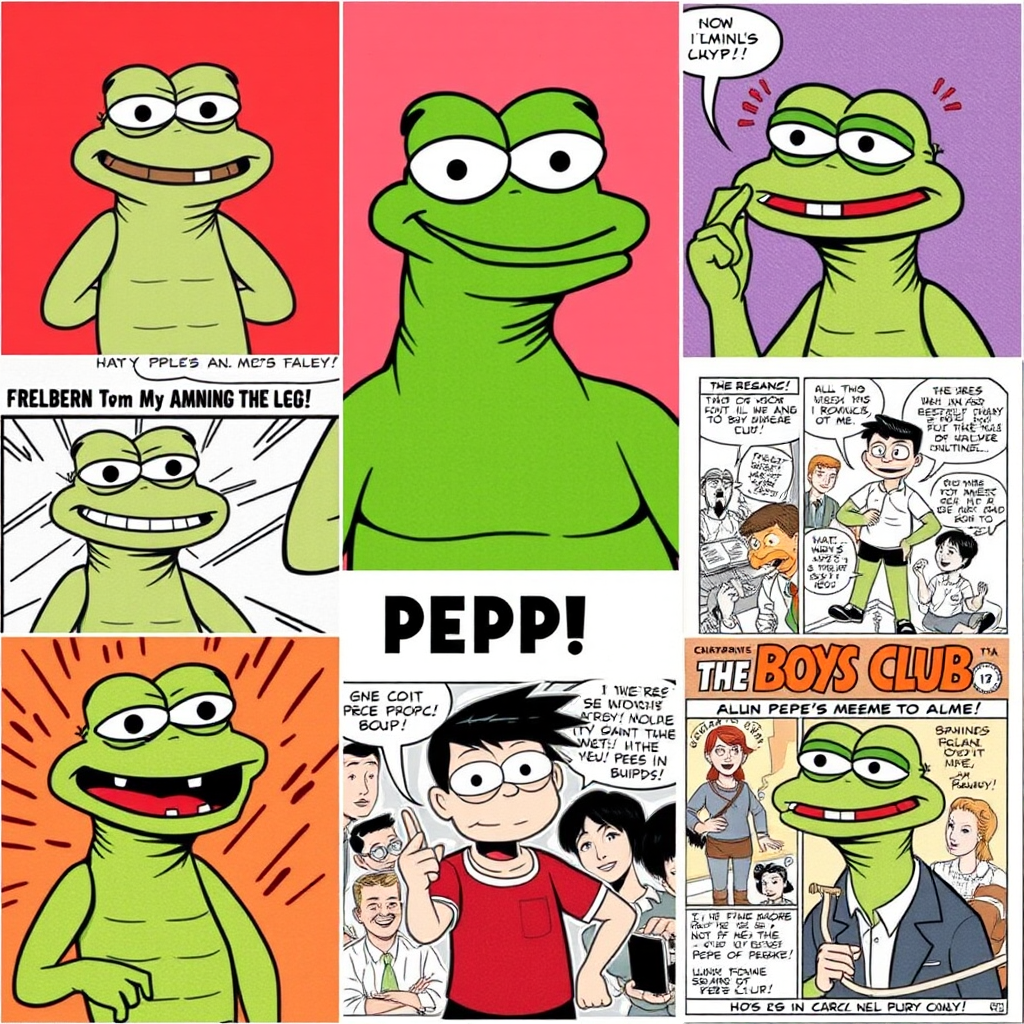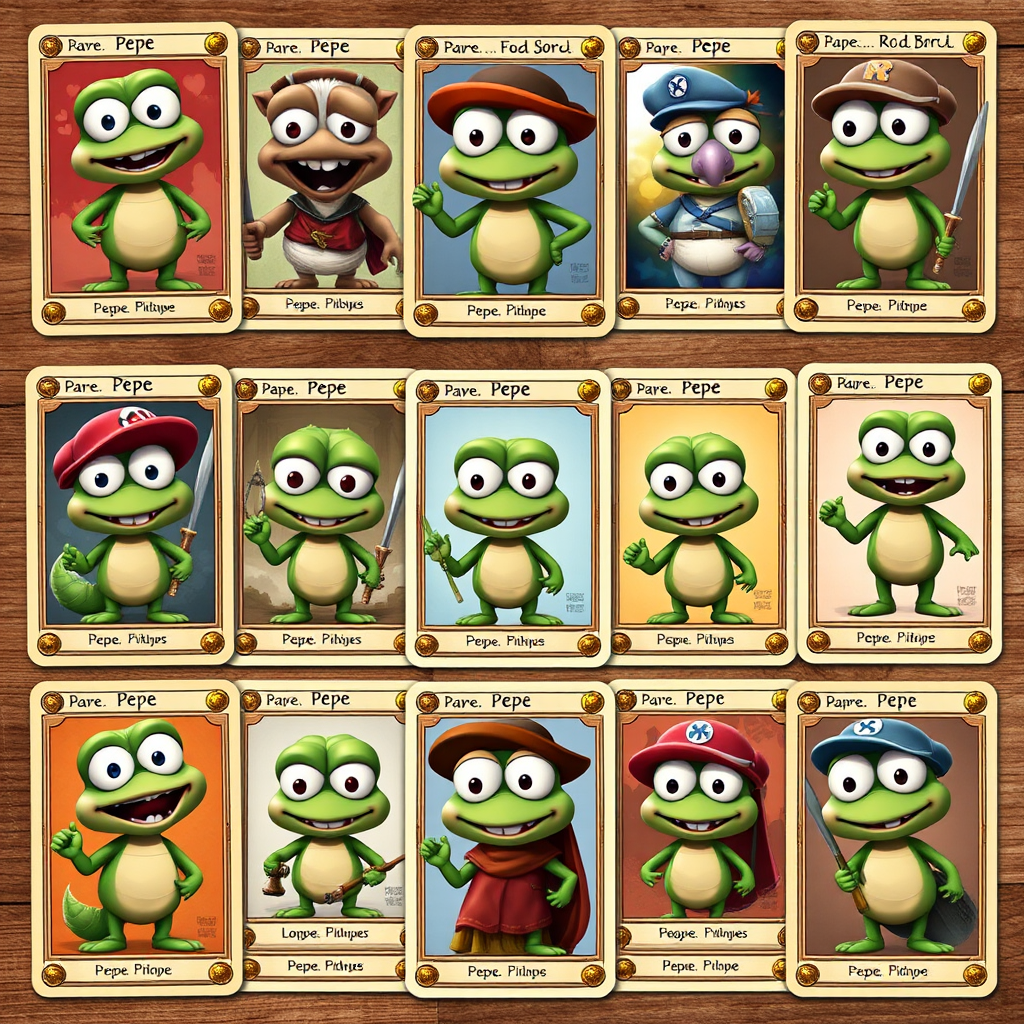Hidden Stories Behind the Meme: 10 Surprising Facts About Pepe
Discover lesser-known trivia and fascinating details about Pepe's history that even dedicated fans might not know. From the original comic's storylines to unexpected celebrity endorsements and appearances in mainstream media, this post reveals the surprising depth behind what many consider just a simple meme.

While millions know Pepe as the ubiquitous green frog of internet culture art, few are aware of the fascinating stories that shaped this iconic character's journey from comic strip to global phenomenon. Today, we're diving deep into the hidden narratives that make Pepe world far more complex than most realize.
1. The Original Boys Club Comic Had Deeper Themes
Matt Furie's original Boys Club comic, where Pepe first appeared in 2005, wasn't just about cartoon frog pictures and silly antics. The comic explored themes of friendship, growing up, and the transition from carefree youth to adult responsibilities. Pepe's famous "feels good man" line originally came from a scene where he was simply enjoying a moment of peace while using the bathroom - a surprisingly mundane origin for such an iconic phrase.

2. Celebrity Endorsements You Never Knew About
Before Pepe became controversial, several celebrities quietly embraced the meme. Katy Perry famously tweeted a Pepe image in 2014, and Nicki Minaj shared Pepe content on her Instagram. These endorsements helped legitimize meme culture in mainstream media, showing how internet culture art was beginning to bridge the gap between online communities and celebrity culture.
3. The Museum Exhibition That Changed Everything
In 2016, the Museum of the Moving Image in New York featured Pepe in their exhibition "The Art of the Meme." This was one of the first times a major cultural institution recognized memes as legitimate art forms. The exhibition included original artwork by Matt Furie alongside user-generated Pepe variations, highlighting the collaborative nature of art community memes.
"Pepe represents the democratization of art creation. Anyone can take this character and make it their own, creating a new piece of internet culture art that resonates with millions."
4. The Cryptocurrency Connection
Long before the recent surge in meme-based cryptocurrencies, Pepe was already making waves in the digital currency world. The "Rare Pepe" trading cards, launched in 2016, were among the first -like collectibles, predating the mainstream boom by several years. These digital collectibles created an entire economy around cartoon frog pictures, with some rare cards selling for thousands of dollars.

5. International Variations and Cultural Adaptations
Pepe's global reach extends far beyond English-speaking internet communities. In Japan, "Pepe-kun" became integrated into otaku culture, while in Brazil, "Sapo Pepe" developed its own unique characteristics. Each culture adapted the meme to reflect local humor and social commentary, creating a truly international phenomenon that transcends language barriers.
6. The Academic Studies
Universities worldwide have conducted serious academic research on Pepe and pepe meme culture. Studies from MIT, Stanford, and Oxford have examined how the character represents modern communication patterns, digital folklore, and the evolution of visual language in the internet age. These scholarly works have elevated Pepe from simple meme to subject of legitimate academic inquiry.
7. Hidden Messages in Popular Variations
Many popular Pepe variations contain subtle references and inside jokes that only dedicated fans recognize. The "Smug Pepe" expression, for instance, was inspired by a specific facial expression from a 1990s anime character. These hidden connections create layers of meaning that make each little pepe variation a piece of collaborative storytelling.

8. The Merchandise Empire
Beyond digital spaces, Pepe has generated millions in merchandise sales. From official Matt Furie products to licensed apparel, the character has become a significant commercial entity. Interestingly, much of this success comes from the art community memes that fans create and share, driving demand for physical products featuring their favorite variations.
9. Influence on Modern Animation
Several animated series and web shows have incorporated Pepe-inspired characters or referenced the meme directly. The character's simple yet expressive design has influenced how modern animators approach character creation for internet audiences, proving that internet culture art can impact traditional media production.
10. The Preservation Project
Recognizing Pepe's cultural significance, digital archivists have created comprehensive databases to preserve the character's evolution. The "Pepe Archive Project" documents thousands of variations, tracking how the meme has changed over time and ensuring that this piece of internet history isn't lost to server crashes or platform changes.
The Lasting Impact
These hidden stories reveal that Pepe is far more than a simple meme - he's a cultural phenomenon that bridges art, technology, and human expression. From his humble beginnings in Boys Club to his current status as an icon of internet culture art, Pepe continues to evolve, adapt, and inspire new generations of creators in the ever-expanding pepe world.
Understanding these hidden stories helps us appreciate the depth and complexity behind what many dismiss as "just a meme." Pepe's journey from comic character to cultural icon demonstrates how internet culture art can transcend its origins to become something truly meaningful in our digital age.